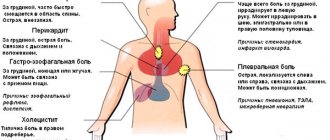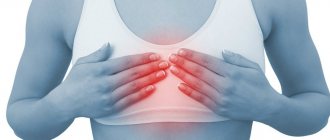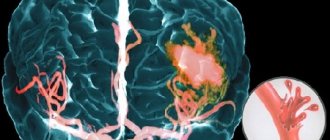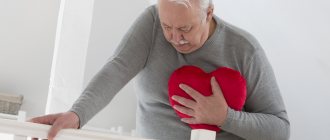When aching pain in a tooth appears, a person is simply unable to think about anything else, because this is one of the most unpleasant sensations. Moreover, it often happens that the pain begins at night or at times when dental care is not available (at the dacha, on a trip, etc.), and it is not possible to immediately see a doctor for treatment. Why does pain occur, and how to soothe an aching tooth before visiting the dentist?
Lower abdominal pain. Causes: gynecological diseases
The content of the article
Pain in the lower abdomen during menstruation
Dysmenorrhea is one of the most common pathologies that causes pain in the lower abdomen. Dysmenorrhea can be a primary cause, or secondary when diseases of the female genital organs already exist.
In severe cases of dysmenorrhea, in addition to abdominal pain, vegetative symptoms appear, such as:
- nausea;
- vomit;
- headache;
- general weakness;
- nervousness.
Endometriosis is a cause of pain in the lower abdomen
Endometriosis is a disease characterized by the appearance of the lining of the uterus outside the organ itself. The mucous membrane grows and undergoes the same changes as the uterine mucosa during the menstrual cycle.
Endometriosis
Monthly bleeding of endometriotic tissue very often causes pain in the lower abdomen. Abdominal pain usually begins a few days before the start of menstruation.
Other symptoms of endometriosis include:
- painful sexual intercourse;
- lack of pregnancy (infertility);
- dysmenorrhea.
What to do if symptoms are present
If a woman has pain in her lower abdomen for a long time, she should consult a doctor. He will examine the patient, study all the features of the body, and palpate the stomach with his fingers.
If a man comes to the appointment, then usually his testicles and penis are examined, if a woman, then the doctor examines the pelvic area. This allows you to understand whether the lower abdomen hurts due to the uterus, ovaries, and fallopian tubes.
When to see a doctor
You should visit a specialist if the following symptoms appear:
- the duration of pain is more than 6 hours without a break, high intensity;
- in case of sharp pain in the lower abdomen on the right;
- if your stomach hurts after eating;
- if the pain is very strong, appetite disappears;
- when experiencing pain, a person vomits several times in a row;
- if pain in the lower abdomen occurs in pregnant women;
- in case of increased pain when changing body position;
- when the stomach hurts at the navel, then movement occurs. If pain is felt in the lower right quadrant, this may indicate appendicitis;
- if sleep is interrupted due to pain;
- pain ends in bleeding (in pregnant women);
- if in addition to pain there is a high temperature;
- if it is painful for a person to release gases, as well as during bowel movements and urination;
- if there is any kind of pain in the abdomen on the right, which differs from the usual discomfort in the stomach area.
It is best to visit a doctor if your stomach hurts for a week. Then you can avoid serious consequences.
When urgent medical attention is needed
You should call an ambulance as soon as possible in the following situations:
- if your stomach hurts badly and this leads to loss of consciousness and inability to breathe. This is typical for diseases such as liver failure, acute pancreatitis, abdominal bleeding;
- if the stomach hurts badly, a fever appears and the person is unable to move;
- painful sensations in the abdominal area lead to vomiting for several hours or vomiting blood;
- if the intestines do not work for several days due to acute pain. This may indicate obstruction of the digestive tract;
- if bleeding has started from the rectum. If the pain in the lower abdomen is acute, then a person may develop hemorrhagic gastropathy and intestinal ischemia. In the case of a chronic disease, abdominal pain with simultaneous bleeding indicates cancer;
- a person may have pain in the abdomen, chest, but he is not entirely sure of its placement. In such cases, heart disease often occurs;
- Men have stomach pain (groin area). This may indicate testicular torsion. If left untreated, tissue necrosis is possible.
Treatment of abdominal pain
If your stomach hurts, doctors can use two treatment methods - surgery or a conservative method. Sometimes it is necessary to undergo surgery (appendicitis, intestinal obstruction) to save a life. At JSC "Medicine" (clinic of Academician Roitberg), you can undergo effective treatment in a hospital; for this, visit the page.
The most important thing is to visit a specialist on time. He will study the whole picture and prescribe the necessary treatment. If it hurts in the front of the abdomen, tests are taken and all the research is done. Based on this, a diagnosis is already made.
Abdominal pain during pregnancy
If the symptoms listed above are absent, then heaviness in the abdomen and pain may indicate other causes. Pain in the lower abdomen may occur during pregnancy in women who are in the first trimester. This happens as the uterus grows and blood circulation increases. If a woman is pregnant, but the term is later, then abdominal pain may be associated with the fact that the baby’s weight has increased. Such sensations inside the abdomen can also occur as a result of stretching of the pelvic floor muscles, pressure on the rectum and bladder from the side of the uterus.
However, if your stomach hurts with nagging pain, you feel heaviness, but you also have vaginal discharge, spasms, pain, then you should definitely go to a specialist. Such symptoms can prevent premature birth, ectopic pregnancy, and miscarriage.
During pregnancy, your stomach may hurt due to diastasis. The growing uterus puts pressure and causes the abdominal muscles to separate. In most cases there is no pain, but sometimes there is pain in the back and navel. You don't need a doctor's help here. Almost always everything returns to normal after childbirth is over.
Treatment at home
Everything is quite simple here; you can use some methods when there is pain in the lower abdomen:
- eat prunes if you have pain in your lower abdomen. You can also take any product that contains a lot of dietary fiber (broccoli, bran). Prunes are especially useful in such situations because they contain sorbitol (a laxative of natural origin);
- Drink tea made from ginger, chamomile or peppermint. Such herbs reduce nausea and help with abdominal pain. With the help of ginger you can normalize digestion, chamomile and mint will help relieve muscle spasms;
- Use baking soda and prepare an aqueous solution. Baking soda is found in most antacid medications. It is worth taking 1 tbsp. baking soda and dilute with warm water (1 cup);
- Get a massage if your stomach hurts during your period. Spasms may occur inside due to the muscles being too tense. You will need a light massage, you need to focus on the place where it hurts the most;
- take a bath with hot water. Water will relax muscles, improve blood circulation, and relieve pain. You need to lie down for about 20 minutes. If a woman has a stomach ache, you can throw Epsom salts into the bath.
Inflammatory diseases of the pelvic organs
Pelvic inflammatory processes can be caused by numerous pathogenic microorganisms: bacteria, viruses, protozoa or fungi.
The main symptoms of inflammation of the female genital organs include:
- stomach ache;
- slight bleeding from the uterus and vagina;
- soreness of the uterus upon independent palpation of the abdomen.
When there is inflammation of the appendages on the right side, the pain that appears must be differentiated from acute inflammation of the appendix.
How to soothe an aching tooth?
If aching pain inside a tooth or after the removal of a wisdom tooth prevents you from sleeping peacefully or generally thinking about anything else, you need to take care to reduce it to a minimum. And at the first opportunity, be sure to consult a dentist, because pain relief does not mean that the problem has been eliminated, and there is no need for treatment. You can eliminate pain as follows:
- First of all, thoroughly brush your teeth and remove any remaining food from the interdental spaces.
- Rinse your mouth with a soda-salt solution (a teaspoon of soda and salt per glass of warm boiled water). You can use only saline solution or just warm water if nothing else is available.
- Take a pain reliever (analgin, paracetamol, ibuprofen) if possible.
- If there are no medications at hand, you can relieve pain with folk remedies. Rinsing with decoctions of chamomile, calendula, sage, and calamus root helps to cope well with toothache. You can also use tampons soaked in clove, sea buckthorn or mint oil, which should be applied to the affected area. Rinsing with alcohol-containing liquids - propolis tincture, regular vodka or cognac (sweetened alcohol-containing drinks cannot be used for this purpose!) can help get rid of pain.
It is strictly not recommended to use warming procedures in this case - rinsing should be at approximately room temperature, warm compresses and heating pads should not be applied to the sore area. Heat only accelerates and intensifies the inflammatory process, which can provoke the rapid development of a purulent abscess and the spread of inflammation to nearby tissues.
Abdominal pain during pregnancy
An ectopic pregnancy is a pregnancy in which implantation of the embryo occurs outside the body of the uterus. The most common site of ectopic pregnancy is the fallopian (uterine) tube.
Risk factors for ectopic pregnancy include: in vitro fertilization, pelvic inflammatory disease and gynecological surgery.
To diagnose it, the level of human chorionic gonadotropin (hCG) is determined, ultrasound examination and laparoscopy are performed.
The main symptoms of an ectopic pregnancy include:
- delayed menstrual bleeding;
- irregular discharge mixed with blood from the uterus;
- severe pain in the abdominal cavity.
Types of ectopic pregnancies
Miscarriage
Miscarriage is the most common complication of pregnancy. This term refers to the expulsion of the fertilized egg from the uterus before 22 weeks of pregnancy. If three more miscarriages occur after the first one, this condition is called recurrent miscarriage.
The main symptoms of a miscarriage include bleeding and pain in the lower abdomen of varying severity. The most common causes are genetic, hormonal, anatomical and immunological pathologies. The risk of miscarriage is related to the age of the pregnant woman. Women who become pregnant after age 35 have a much higher risk of miscarriage.
Genital cancer – pain and discomfort in the lower abdomen
Malignant neoplasms of the genital organs are one of the most common tumors found in women. One of the most common types of cancer is endometrial cancer, and the most severe types with the poorest prognosis are ovarian tumors.
A woman is often not bothered by anything; signs of ovarian cancer are uncharacteristic, and their appearance begins in a late stage of development. Manifestations of ovarian cancer include: increased circumference, pain and discomfort in the lower abdomen. 20% of patients experience symptoms of diseases from the genital organs, gastrointestinal tract and bleeding from the vagina.
Other fairly rare causes of abdominal pain include:
- torsion of the uterine appendages;
- rupture of an ovarian cyst;
- acute degeneration of uterine fibroids.
These diseases are characterized by acute, sudden, very severe pain in the lower abdomen and require hospitalization and emergency medical care.
Pain in the left side behind in the area of the kidney and lower back
Pain in the left side behind in the area of the kidney and lower back
Any pain indicates that not everything is in order in the body. It is especially worth paying attention to frequently recurring or persistent pain. In this case, you should not postpone visiting a doctor, since only a specialist will be able to correctly identify the cause and prescribe appropriate treatment. Based on the location, intensity and nature of the pain syndrome, as well as accompanying symptoms, you can draw your own conclusions about which organ the problems started with. So, if the pain is localized in the left half of the back, namely the kidney area, then problems may be associated with the urinary system, spleen or intestines.
Probable Causes
Pain in the left side behind most often indicates heart disease. If it is localized just below the scapula, it may indicate the following diseases:
- pericarditis;
- angina pectoris;
- myocardial infarction.
Moreover, if the problem is related to a heart attack, then sharp, sharp pain sensations are usually localized in the chest area. But they can affect the left half of the body, namely the lower back, or under the shoulder blade. That is why it is very difficult to determine without diagnosis what causes such pain. However, the following accompanying symptoms may indicate that the problems are related to the heart and not the kidneys:
Important: if the accompanying symptoms listed above appear, you must urgently call an ambulance.
Pain in the kidney area
If the left side behind in the kidney area hurts, then this may be caused by ailments of the urinary system, namely:
An attack of so-called renal colic due to urolithiasis. As a rule, nagging, mild pain is accompanied by urolithiasis at the initial stage. If the stones have just begun to form, the person may feel a dull pain from time to time. If the stone begins to move along the urinary tract, severe pain will appear, which is called renal colic. Moreover, its intensity and localization do not depend on changes in body position. No less severe pain will occur if the urinary duct is blocked by a calculus. Associated symptoms:
- blood in urine;
- temperature increase;
- deterioration in general health;
- Problems with urine excretion often occur.
Most often, pain in the left side behind with kidney problems is caused by pyelonephritis. This inflammatory disease of the pelvis of the organ is caused by infections. In addition to pressing and aching pain, other characteristic symptoms are also noted:
- temperature increase;
- general malaise;
- nausea and vomiting;
- no appetite;
- swelling in the morning;
- pale skin;
- frequent urge to urinate;
- pain in the process of urination.
Glomerulonephritis. In this disease, the inflammatory process is localized in the area of the renal tubules and glomeruli. Often the cause of the disease is streptococcal infection. Most often, the problem is localized on both kidneys, but unilateral damage can also occur. There are other signs of this disease:
- fatigue, lethargy;
- pallor;
- severe swelling in the morning and weight gain of the patient;
- a sharp increase in blood pressure to high levels;
- decrease in daily urine volume (less than a liter);
- Due to the ingress of blood, the urine takes on the color of meat slop.
Pain in the left side may also be due to thrombosis of the arteries of the kidneys. In this case, the symptoms are very similar to hypertension. If a cholesterol plaque clogs the artery duct, then due to the disruption of blood flow, a disruption occurs in the process of urine formation. This causes aching pain and increases blood pressure. Thrombosis of the renal arteries. If a detached blood clot blocks the lumen of the artery, then severe pain occurs, radiating to other parts of the body. Associated symptoms:
- constipation, vomiting and nausea;
- increased blood pressure;
- heat;
- decrease in the amount of urine or its absence.
Nephroptosis can cause pain in the left side behind. Nephroptosis is called prolapse of the kidney. This condition can be caused by various reasons. When the artery prolapses, the kidneys can be compressed, which causes poor circulation in the organ and pain. Also, pain can occur due to kinking of the ureter and disruption of the outflow of urine. The main feature of this condition is increased pain in an upright position and the ineffectiveness of using analgesics. Kidney cysts can cause nagging pain from the affected organ. These pathological neoplasms can be acquired or congenital. Associated symptoms: increased blood pressure, blood in the urine, frequent infections of the urinary system. But more often they exist asymptomatically, and pain occurs in the following cases:
- if a large cyst puts pressure on surrounding tissues and organs;
- overstretching of the kidney capsule;
- disturbance of urine outflow.
behind can be present for a long time with kidney cancer
Malignant and benign neoplasms of the organ. In the initial stages, these pathologies do not produce any symptoms. The first sign of trouble may be heaviness in the kidney area. Dull pain in the left side behind can be present for a long time with kidney cancer. In this case, at first the pain is very mild, but as the disease progresses, its intensity increases. With kidney cancer, there are accompanying signs of the disease:
- lack of appetite;
- drowsiness;
- increased fatigue;
- the patient loses weight;
- general malaise;
- anemia;
- pale skin;
- blood in urine;
- constant low-grade fever;
- high pressure.
Hydronephrosis. With this disease, urine stagnates in the renal pelvis and causes overstretching of the renal pelvis. There are different causes of hydronephrosis. In this case, painful sensations can radiate to other parts of the body and legs. Very often the symptoms of the disease are confused with problems of the digestive tract. Frequent infections of the urinary system may indirectly indicate the presence of this pathology. Children experience bloating, nausea, vomiting and digestive disorders. Often severe and long-lasting hydronephrosis causes developmental delays in children. Kidney tuberculosis at a later stage can cause stabbing pain in the area of the affected organ. At the initial stage, there is no pain, there is only a feeling of general weakness, lethargy and increased fatigue. If pain appears, then in terms of intensity and spontaneity it can be compared with renal colic. In addition, there are accompanying signs of the disease:
- blood and pus in the urine;
- cloudy urine.
Pain on the left just above the lower back
If pain occurs in the left side behind in the lumbar region, or rather, in the upper part, then they may not necessarily be associated with the kidneys. In this case, aching pain may indicate the following diseases:
- osteochondrosis;
- diseases of the cardiovascular system;
- gastritis and ulcers;
- pneumonia;
- various ailments of the digestive system;
- spinal injuries;
- physiological conditions during pregnancy;
- after previously suffering from tuberculosis.
Pain in the hypochondrium when inhaling
If pain is localized under the lower ribs on the left and intensifies when inhaling, then they can be associated with heart disease, pneumonia, hernia, rupture of the spleen, diseases of the esophagus, and muscle pathologies. In this case, the cause of the painful syndrome can often be identified by the nature of the pain:
- Severe, sharp pain often appears unexpectedly. It may indicate life-threatening conditions and diseases such as rupture of the renal pelvis or spleen. Since these conditions threaten the patient’s life, you should immediately call an ambulance.
- Prolonged dull pain may indicate the presence of a chronic disease. They can be due to chronic kidney problems, gastritis or pancreatitis.
- Pulsating, incessant pain indicates the presence of a chronic inflammatory process in any organ. More often this is associated with chronic pyelonephritis, colitis, and peptic ulcer. If such pain occurs frequently, it may indicate a pre-infarction condition.
Aching pain in the lower back
Pain syndrome with such localization can be acute or dull in intensity. Moreover, it most often indicates problems with the spine, especially if there are no other symptoms characteristic of kidney diseases.
Lower back pain can be caused by the following diseases and conditions:
- osteochondrosis;
- excessive physical activity;
- prolonged sitting;
- intervertebral hernia;
- stenosis;
- spondylolisthesis;
- spinal arthritis;
- spine fracture;
- tumors of the spinal column;
- osteomyelitis.
Prostate diseases
Pain in the lower abdomen in men can occur as a result of prostate disease. Prostate diseases that cause pain in the lower abdomen include:
- inflammation of the prostate gland;
- prostate hypertrophy;
- prostate cancer.
Stages of prostate cancer
Inflammation (prostatitis) in the absence of treatment becomes chronic, possible development of abscess and fistulas of the prostate gland, cystitis and pyelonephritis, infertility due to the formation of autoimmune antibodies.









